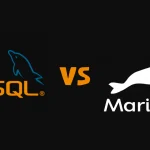MariaDB: One Amazing Journey From Rebel to Rockstar

In the rapidly evolving realm of database management systems, a tale of innovation, community collaboration, and open-source ideals comes to the fore in the form of MariaDB. Born out of a pivotal moment in the history of MySQL, MariaDB’s journey is not just a chronicle of technical evolution but a testament to the power of a committed community and the drive to preserve the principles that underpin the world of open-source technology. As we delve into the history of MariaDB, we uncover the story of a database system that emerged as an alternative, flourished as an independent entity, and stands as a symbol of resilience in the face of change.
If the comparison between MySQL and MariaDB piques your curiosity, I invite you to explore this separate post.
1995: The MySQL Foundation – Laying the Groundwork
The story begins with MySQL, an open-source database system developed by a Swedish company called MySQL AB in the mid-1990s. With its user-friendly interface and versatility, MySQL rapidly gained popularity and became a vital tool for countless applications.
2008: Concerns Loom Large – Oracle’s Acquisition of MySQL
However, in 2008, seismic waves shook the MySQL community when it was announced that Sun Microsystems was acquiring MySQL AB. Further ripples ensued as Sun Microsystems was, in turn, acquired by Oracle Corporation in 2010. These developments cast a shadow over MySQL’s future, raising concerns about its continued openness, compatibility, and independent development.
2009: Enter MariaDB – A Fork for Freedom
Amid these uncertainties, a familiar name emerged on the horizon: Michael “Monty” Widenius, one of the original creators of MySQL. With a vision to preserve the essence of MySQL’s open-source legacy, Widenius initiated the MariaDB project in 2009. The project was aptly named after his youngest daughter, Maria.
2010: First Release
The first version of MariaDB, MariaDB 5.1, was released. It aimed to be a drop-in replacement for MySQL, ensuring compatibility with existing applications and tools.
2012: MariaDB Foundation
In 2012, the MariaDB Foundation was established as a non-profit entity, solidifying MariaDB’s commitment to open-source principles. The foundation provided governance, support, and direction, ensuring that MariaDB remained free from corporate control and aligned with community interests.
2013: MariaDB 10.0 and the Merge of MySQL Features
MariaDB 10.0 was released, introducing several new features and improvements. This version marked a significant step forward for MariaDB’s development.
2014: Adopting New Storage Engines
MariaDB started adopting new storage engines like Aria and TokuDB, enhancing performance, scalability, and overall functionality.
2015: MariaDB Corporation
MariaDB Corporation, a separate entity from the MariaDB Foundation, was founded to provide commercial support, consulting, and services around MariaDB.
2016: MariaDB 10.1 and ColumnStore
MariaDB 10.1 was released, bringing more advanced features and improvements to the database system. MariaDB also introduced ColumnStore, a columnar storage engine for data warehousing and analytics workloads.
2017: MariaDB 10.2 and Growing Adoption
MariaDB 10.2 was released, introducing even more performance improvements and enhancements. MariaDB’s adoption continued to grow, with various organizations and cloud providers offering MariaDB-based solutions.
2018: MariaDB 10.3 and Continued Development
MariaDB 10.3 was released, focusing on further optimizations, features, and compatibility enhancements.
2019: MariaDB 10.4 and Beyond
MariaDB 10.4 was released, showcasing ongoing development efforts to make MariaDB a competitive and robust alternative to other database systems.
2020s: Ongoing Development and Advancements
MariaDB continues its development with a focus on features, performance, and security. It maintains its commitment to providing an open-source, community-driven, and user-friendly database system.
Conclusion: A Forked Future
In tracing the fascinating journey of MariaDB, we encounter more than just a fork in the database world; we discover a story of resilience, community strength, and unwavering commitment to open-source ideals. MariaDB’s evolution from a response to uncertainty to a full-fledged, innovative database solution is a testament to the power of collective effort and the ability to shape one’s destiny.
As MariaDB continues to push boundaries, enhance performance, and uphold its open-source values, its story remains a source of inspiration. It reminds us that even in the face of challenges, a passionate community can forge new paths, redefine industry standards, and offer a beacon of hope for those seeking an alternative that aligns with their values.
The history of MariaDB underscores the importance of diversity in the software landscape, highlighting the role of competition in driving innovation, fostering continuous improvement, and safeguarding the principles that make open-source technology a force for positive change. As we look ahead, we can only anticipate more chapters to be added to MariaDB’s story, each one a testament to the enduring spirit of collaboration, adaptability, and the quest for a better, more inclusive technological future.
If you haven’t had the chance to peruse the post discussing MySQL vs MariaDB, I recommend giving it a read.






Leave a Reply